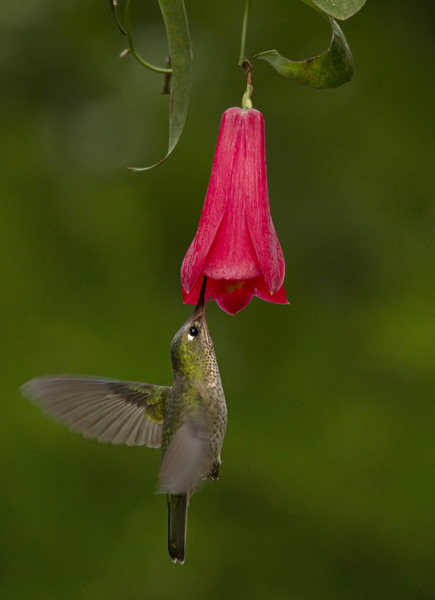Pollination Patterns by Green-Backed Firecrown Hummingbirds
(1) Sacred Heart Schools, Atherton, California, (2) Bird Ecology Lab, Instituto de Ciencias Marinas y Limnológicas, Universidad Austral de Chile, Valdivia, Chile, (3) Department of Biology, Stanford University, Stanford, California
https://doi.org/10.59720/19-129
The Green-backed Firecrown is the only hummingbird species found throughout the temperate rainforests of southern South America and is among the region’s most important pollinators. A diverse assemblage of the region’s flora appears to rely on the Green-backed Firecrown for pollination, which makes the firecrown vital for ecosystem function. However, relatively little is known of firecrown ecology. We examined the foraging patterns of Green-backed Firecrowns of various ages and both sexes, using pollen samples taken from birds in southern Chile. We hypothesized that males and females would carry distinct pollen communities (sets of pollen morphospecies) and would differ in the number of pollen morphospecies carried. We found a clear difference between pollen communities carried by hummingbirds in summer and winter, but little differentiation by age and sex. We also found that females, on average, carried more pollen morphospecies than do males, and juveniles carried more morphospecies than do adults. All Green-backed Firecrowns carried significantly higher numbers of pollen grains in summer than in winter. Our results show intriguing differences in foraging behavior and pollination roles across ages and between sexes, which support anecdotal observations that adult males are territorialists while females and juveniles forage opportunistically. Since Green-backed Firecrowns are the only hummingbird species throughout most of their range, sexually divergent foraging patterns suggest that males and females may fill the ecological roles of different species. Our results add to the field’s understanding of the foraging patterns of Green-backed Firecrowns and help us better appreciate the complexity of its ecological role.
This article has been tagged with: